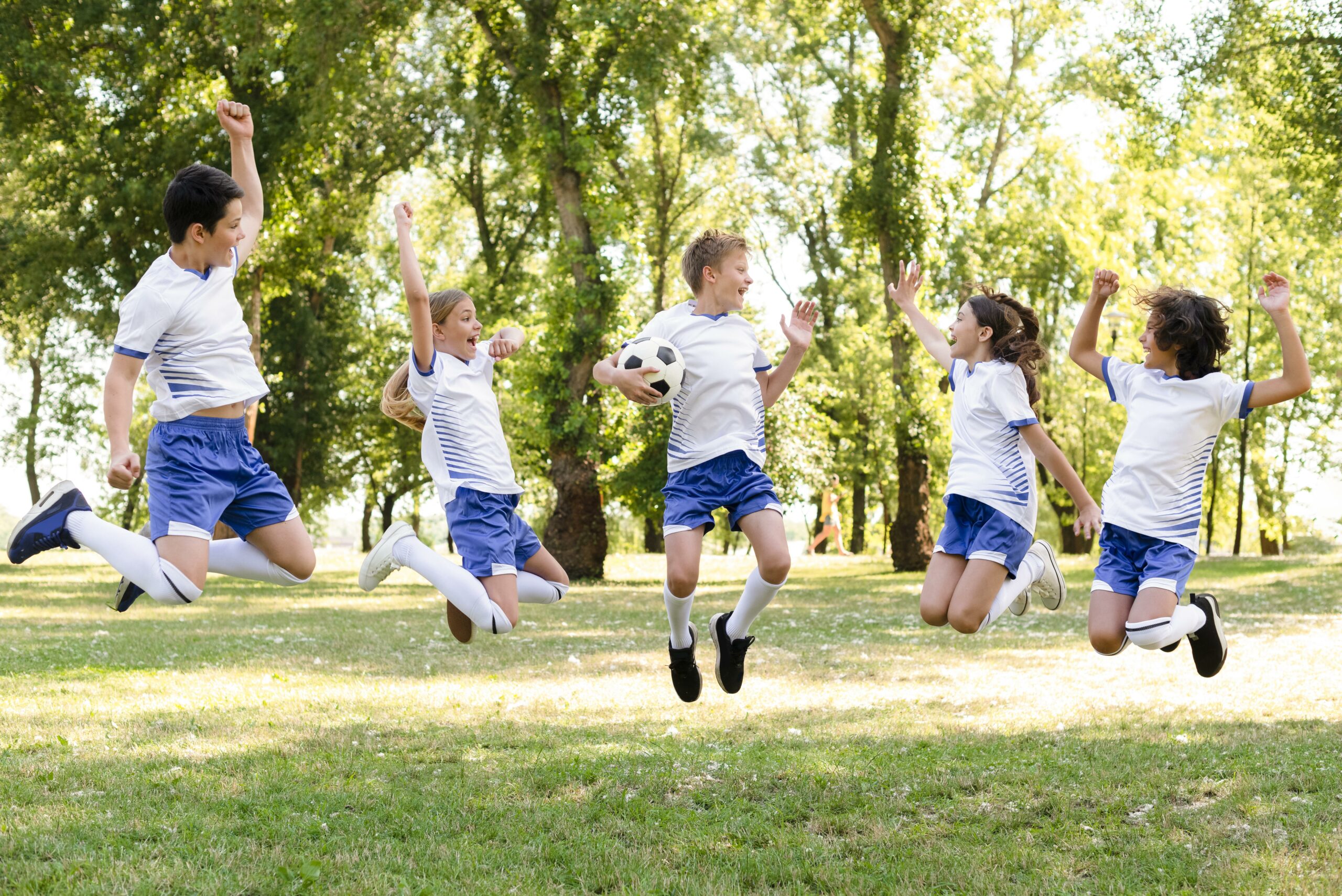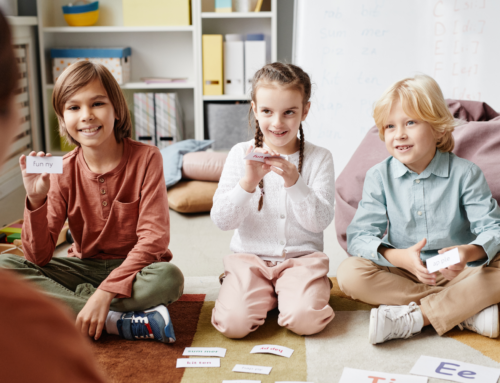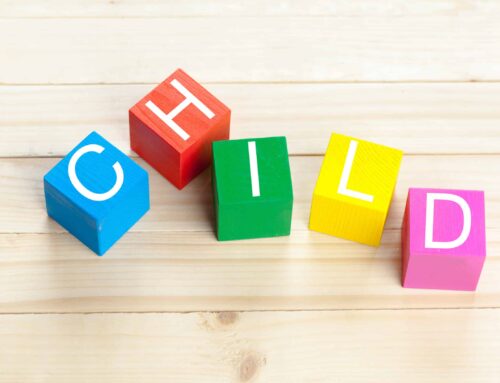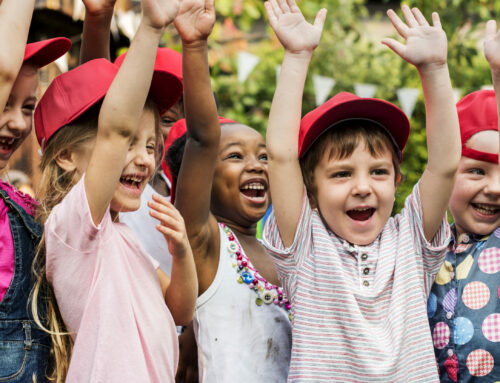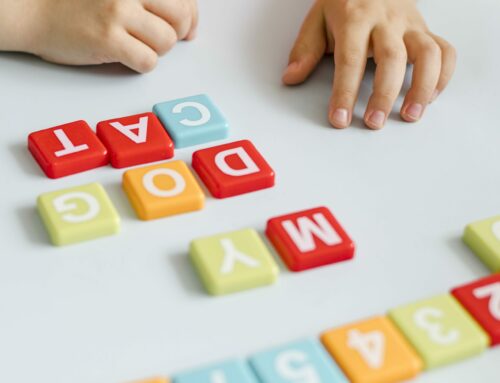Physical activity is conducive to academic success. It’s a widely acknowledged idea in the education sector and one that has a proven track record. A causal link has been established in terms of attention span, concentration (and therefore memorization), and the process of inhibition (the development of self-confidence and an improvement in self-esteem).
At The Garden Academy, we award great importance to sports and to games, because as we know, and has been empirically tested; physical activity is conducive to learning and to the well-being of every child. In this article, our teachers share their experiences with this.
Physical Exercise Stimulates Mental Energy
Research has shown that children who have daily physical activity throughout their education achieve better grades. This is because they are less likely to be distracted during class and are capable of memorizing information more quickly during teaching episodes. It’s clear that children possess a greater disposition for learning in the classroom once they have stimulated their bodies.
Sport is very clearly conducive to cerebral activity and therefore the development of skills, but it doesn’t stop there! As a matter of fact, research has proven that physical activity reinforces cognitive activity. Sporty children are very often excellent problem solvers. In sports or in games, we set out rules and goals for the child with the aim that they can then find a way to outsmart their opponent or more commonly find a solution to win. It’s exactly the same intellectual pathway that a child finds in the classroom: the child listens and understands the instructions and then applies them to solve the problem. The child consequently develops skills and knowledge in academic subjects thanks to their experience in sports and games.
The Effects of Sport on the Brain
To circle back to our original premise; sport is indeed good for brain activity. But why? How exactly does it function within our brain? During physical exercise, the cardiac rhythm accelerates, and alongside it, blood flow. As a result, the brain receives greater oxygen, which has the positive effect of improving interactions between the different cerebral zones and skills and knowledge. In addition to a greater level of oxygen in the brain, sport stimulates the production of proteins and of substances productive to brain development. Neurotransmission is modified and it leads to an increase of neurons in certain zones of the brain, in particular the one concerned with memory. But what research has equally discovered is that this effect of physical activity on memory is not only apparent in the medium- or long-term but can also be momentary. According to German researchers, physical activity during teaching helps with memory. To improve learning capabilities, moderately intense sports such as walking, cycling, and games at the park are advised to improve learning capabilities. It’s for this reason that at The Garden we integrate these hours of physical activity into our daily program.
Improve Social Skills
Having good relationships with their classmates enables a child to fully flourish, feel at ease in their environment, and be more open to learning. Sports and games help to build these good relationships. Thanks to games, friendships become stronger and the atmosphere in the class is positive which enables teaching to prosper. It’s a virtuous circle, a fair balance that we have adopted and one that we work with every day in our schools.
Sporting Values Shape the Adults of Tomorrow
Sport teaches the quintessential values of life. Through integrating these values from a very young age, the child will transition into adolescence more easily and then into the adult world. Understanding and following the rules of a game develops the discipline that each child needs in order to grow up well, in order to acquire a methodological approach to work, an to activate their skills and knowledge.
Sport promotes also humility, notably in defeat. Becoming a good loser, is something that is learned and it’s very useful in everyday life during childhood and even during adulthood.
The experience of our teachers
“Physical Education in school is often overlooked, but is also one of the most important aspects of a child’s development at a young age. Regular physical activity has shown to improve academic performance, boost brain health, and reduce stress and anxiety. Apart from physical benefits, the emotional and socio-emotional benefits also cannot be overlooked. Physical education helps children learn important life skills such as communication, cooperation, and teamwork. Physical education is a part of a well-rounded curriculum. At The Garden Academy, we are integrating sports and games into our everyday activities.”
Thinking about their future. “Students benefit from better physical health and academic performance as a result of physical education in schools. As children grow older, it is critical to instill in them a positive attitude about exercise from a young age. Regular physical activities are more likely than not to increase the likelihood of adults being physically active.”
Developing cooperation. “When students are involved in physical activities in their early years, they develop a sense of identity, whereas physical education begins in the early years of their lives and emphasizes cooperation. The program will allow them to develop into team players, collaborate with a diverse range of teammates, and contribute to the team’s success.”
The routine at The Garden Academy. “At The Garden Academy, we are instilling these values in children from as early as our preschool program. Children at The Garden Academy go to the park on a daily basis to work on their motricity, physical education, as well as to get some fresh air. Sports and games are part of our daily routine. In early years, children are still developing their gross motor skills and physical development. The sports and games we use help these skills develop naturally. With younger children, simple activities such as jumping, skipping, and throwing are a foundation for further development. As children get older, their physical activities progress into games such as completing obstacle courses, running, yoga, football, relay races, freeze tag, and much more. When possible, many of these activities take place outside or on the playground. Holding these activities outdoors allows children to exercise more vigorously and helps them to be encouraged to move among many other benefits.”
More Sport at School: The Government’s Initiative
‘’More sport at school’’ is a measure from the Minister of National Education and Young People aiming to develop the physical development of children and teenagers in collaboration with the Organizational Committee for Paris 2024 and the National Agency for Sport. This measure launched an initiative that proposes that each elementary school teacher dedicates 30 minutes a day to physical activity during school time (PE classes: Physical Education) or in an afterschool program. Aware of these aims, The Garden Academy since opening in 2016 put in place in each of its schools in Paris a daily routine for each of its classes. It equally includes those for the youngest children who start from 2 years old. It’s the age when children need to move and when good habits are formed most easily…
